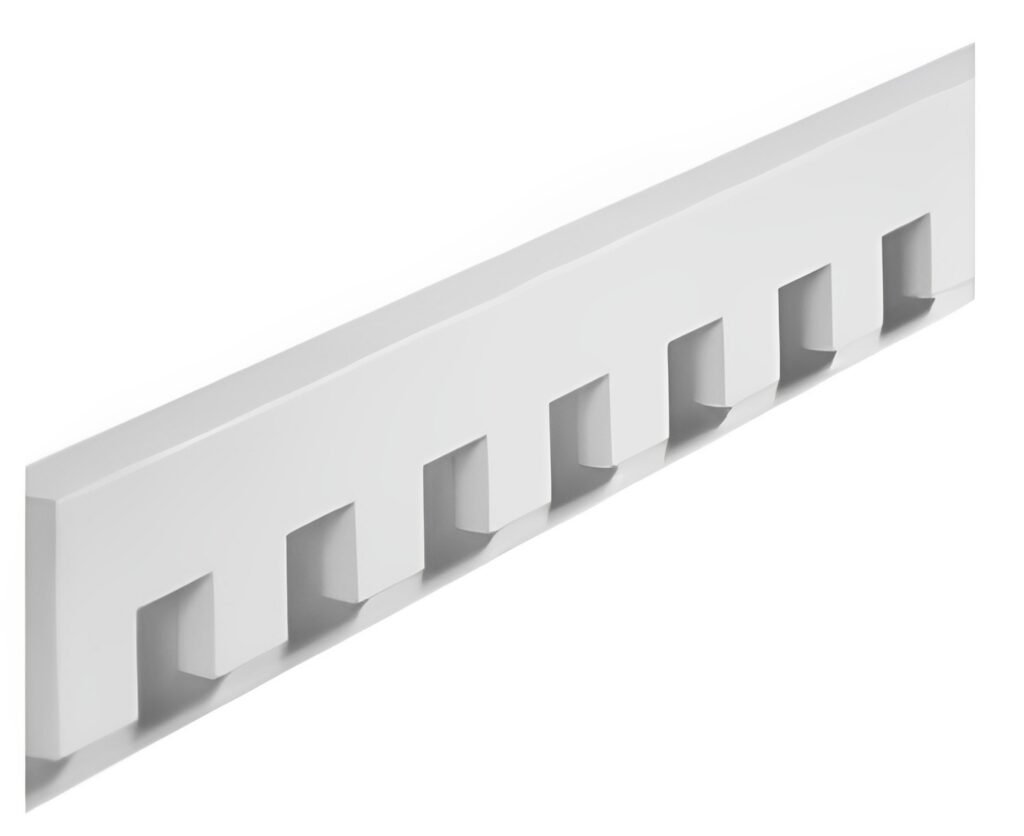Welcome to the fascinating world of exterior dentil molding, where architectural beauty meets intricate craftsmanship. Dentil molding is a timeless decorative element that adds character and sophistication to the exterior of buildings. This ornamental trim features a series of small, rectangular blocks known as dentils, which are evenly spaced along the molding. The name “dentil” derives from the Latin word for tooth, accurately describing the tooth-like appearance of these blocks.
As you delve into the intricate world of exterior dentil molding. You’ll uncover its rich history, dating back to ancient Greek and Roman architecture. From majestic classical structures to elegant Georgian and Victorian homes. Dentil molding has adorned the facades of countless buildings throughout the ages. Today, it continues to be a popular choice for homeowners and architects seeking to add a touch of architectural charm and visual interest to their exteriors. Discover the various styles, materials, and installation techniques that bring dentil molding to life. It prepares to be captivated by the artistry and craftsmanship behind this exquisite architectural feature.
A Rich History: Tracing the Origins of Exterior Dentil Molding
The history of exterior dentil molding dates back centuries, with its origins rooted in classical architecture. The ancient Greeks were the first to incorporate dentil molding in their temples and public buildings. Where it served both functional and decorative purposes. This architectural feature gained prominence during the Roman Empire and continued to evolve throughout the Renaissance and Baroque periods. From grand palaces to humble residences. Dentil molding became a defining element of architectural styles worldwide, leaving an indelible mark on the built heritage of numerous civilizations.

Architectural Significance: Exploring the Purpose and Function of Dentil Molding
Dentil molding, with its repetitive blocks or tooth-like projections, serves multiple purposes in architectural design. Primarily, it acts as a decorative element, adding visual interest and elegance to the exteriors of buildings. However, dentil molding also plays a functional role by providing a visually pleasing transition between different architectural elements. It often acts as a border or cornice along the roofline, offering a sense of completion to the overall structure. Furthermore, dentil molding can help conceal joints and protect vulnerable areas from moisture. Thereby contributing to the longevity of the building.
Material Matters: Examining the Various Materials Used in Dentil Molding
Dentil molding can be crafted from a wide array of materials, each offering unique characteristics and aesthetic appeal. Traditional dentil molding was typically made from stone or wood, such as marble, limestone, or oak. These materials imparted a sense of grandeur and timelessness to the architecture. Over time, advancements in technology and the availability of new materials have expanded the options for dentil molding. Today, it is also commonly produced using synthetic materials like polyurethane, which offer durability, cost-effectiveness, and the ability to mimic the appearance of natural materials.
Craftsmanship at its Finest: Appreciating the Intricate Details of Dentil Molding
One cannot overlook the meticulous craftsmanship involved in creating dentil molding. The intricate details and precise alignment of the blocks require skilled artisans who possess a deep understanding of architectural principles and techniques. Whether hand-carved from stone or meticulously shaped from wood, dentil molding demands a high level of craftsmanship and attention to detail. The process involves carefully measuring and spacing each block to ensure uniformity and symmetry. The artistry and dedication involved in producing dentil molding exemplify the fine craftsmanship that has been passed down through generations of artisans.
A Symbol of Elegance: How Dentil Molding Enhances the Exteriors of Buildings?
Dentil molding serves as a symbol of elegance, instantly elevating the aesthetics of any building. Its repetitive pattern and precise detailing create a visual rhythm that captivates the eye and adds a sense of sophistication to architectural designs. Whether adorning the eaves of a classic Victorian house or accentuating the pediment of a neoclassical building, dentil molding exudes a timeless charm that transcends architectural styles. The shadows cast by the projecting blocks create depth and dimension, further enhancing the visual impact. Dentil molding is an architectural feature that effortlessly enhances the exteriors of buildings, making them more visually appealing and memorable.
Architectural Inspirations: Showcasing Notable Examples of Dentil Molding
Throughout history, numerous notable examples of dentil molding have left an enduring impression on architectural enthusiasts. The majestic entablature of the Parthenon in Athens showcases the precision and elegance of Greek dentil molding. In Rome, the Colosseum and the Pantheon exhibit the mastery of dentil molding during the Roman Empire.
Contemporary Applications: Modern Interpretations of Exterior Dentil Molding
Contemporary applications of dentil molding have witnessed a resurgence in recent years, as architects and designers seek to blend traditional elements with modern aesthetics. While staying true to the historical essence, modern interpretations of exterior dentil molding embrace innovative materials and designs. Architects experiment with unconventional materials like lightweight composites, metal alloys, and even glass, offering a fresh take on this classic architectural feature. The scale and placement of dentil molding have also been reimagined, with designers incorporating it in unexpected areas or creating oversized versions for a bold statement. So, these modern interpretations showcase the adaptability and enduring appeal of dentil molding in contemporary architecture.
Conclusion
In conclusion, delving into the intricate world of exterior dentil molding reveals a rich history, architectural significance, material diversity, and exceptional craftsmanship. This timeless architectural feature has its origins deeply rooted in classical architecture, and its purpose extends beyond mere ornamentation. Dentil molding serves both functional and decorative roles, enhancing the aesthetics of buildings while providing a seamless transition between architectural elements. From traditional materials like stone and wood to modern interpretations using synthetic alternatives, dentil molding showcases the evolution of materials and techniques. Its intricate details and precise craftsmanship stand as a testament to the skill and dedication of artisans throughout history. Whether in historical landmarks or contemporary designs, dentil molding continues to captivate and enhance the exteriors of buildings, leaving an indelible mark on the world of architecture.